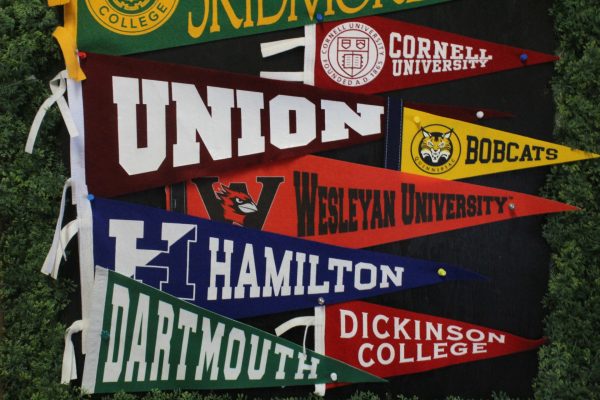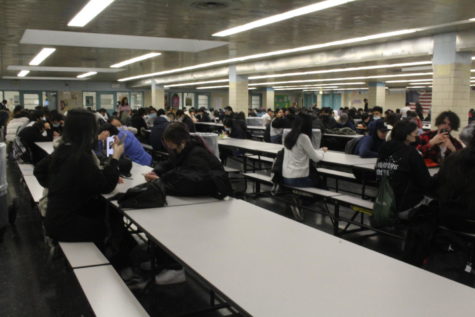Opinion: The Primary Issues
To elect a candidate for president is to elect a leader. Its’ not just for the party, but hopefully for the country as well. That being the case, it should go without saying that such a decision should be made by all potential voters in a way that is fair, and allows people from all over the country to be represented. They are, unfortunately not fair. It’s far from it. From the order of the states to the processes we use to elect a nominee, numerous issues plague the nomination process.
There were eleven democrat candidates by the time the Iowa Caucus hit. By the time Super Tuesday occurred, six of those eleven had dropped out. In the days after Super Tuesday, two of the remaining five, also dropped out. At that point only 18 states have had their primaries. Moreover, if we take a look at all the states who voted and compare them to the demographics of the Democratic electorate in 2016, as recorded by fivethirtyeight.com, only two of the states who had voted by Super Tuesday – Nevada and Oklahoma – were among the top ten states with the most similar demographics to Democratic voters.
The three states who rated the highest were Illinois, New Jersey, and New York, in that respective order. The Illinois primary is March 17th, two weeks after Super Tuesday. The New York primary is April 28th, eight weeks after Super Tuesday. The New Jersey primary is June 2nd, thirteen weeks after Super Tuesday. These states have demographics that are the closest to the people who will be voting in November and yet by the time they get to vote they have little to no say as to who the nominee is.
The current ordering of the states is not reflective of the democratic voter base and in addition, it’s absurd that after Super Tuesday we have three more months of primaries and caucuses. Super Tuesday is the big, formative, cornerstone of the nomination process, and states like New York and New Jersey can only look at it from the sidelines and go, “Cool, give us three months and maybe our opinions can be heard.” That is to say, if this contest even lasts that long in the first place. It wouldn’t surprise me if one of these candidates got all of the needed delegates before June comes around.
Another problem with the nominee election process is how we elect them. States choose which they want to do, a primary or a caucus, and both have their own special little quirks about them that, for lack of a better word, suck.
The caucus is like a 200+ year old grandpa that likes to yell at the dinner table at how important they are, and how he’s lived so long and seen so many things. Meanwhile everyone else at the dinner table is just waiting for him to die already so they can just move on. Essentially a caucus is a system where the organizers set a time where everyone has to get to the polling place by. If you’re late then you’re not voting, sorry. Then the organizers do a headcount. After that there are two phases of the caucus. In the first phase, if a candidate doesn’t get more than 15% then they get eliminated. The second phase is where all the surviving teams fight to get the votes of the people whose candidate was eliminated, like a game show.
The levels of problematic caucuses have proven themselves to be, is astounding. There is the obvious issue of peer pressure. It’s not like people are randomly sorted to random sorting places. They are going to their usual voting place surrounded by their neighbors and family. There is no secrecy to the vote, so there is an additional pressure for one to vote for the candidate that their confidants are voting for. There is also the issue of how they count votes. There’s a reason why every four years during the nomination process it is inevitable that someone will complain about caucuses being rigged. A headcount is not a reliable method of counting. If you try to count every grain of white rice in a package, do you think you’ll miss one? I would. If the total amount of rice between that package of white rice and a package of brown rice was 1000 grains of rice but you counted 499 grains of white rice and 496 of brown rice, where did the remaining five grains of rice go? Those remaining five grains could have determined whether the white rice truly has more grains than the brown rice but, we’ll never know. This is the essence of the issue. This year’s Iowa caucus was another ballgame entirely. They were originally planning on using an app but that crashed so in an eleventh hour move decided to make it a typical caucus.
So that is the state of the caucus; how are primaries? They’re better. It’s more akin to a presidential election, which means that a lot of the pitfalls that a presidential election will fall into so do primaries. For example, paper ballots are always preferable to electronic ballots. Most electronic ballot machines are outdated, old, broken or broken into, and generally easy to hack. Paper ballots leave a physical paper trail, you can always reliably recount the paper. In order to rig electronic ballots you need a good computer, in order to rig a paper ballot you need hundreds of hanging chads and a brother as a governor.
An issue that is more unique to primaries would be who can vote in them. There are two types of primaries when it comes to electing a presidential nominee: closed and open. A closed primary is when only people registered to that party can vote, and an open primary is where anyone who’s registered to vote can vote in the primary. I don’t really have a cute analogy for this one, I just think that if people are going to be in a position to have to vote for one of two candidates from the two major parties, then it shouldn’t matter whether someone is registered with the party or not, they should be able to vote for a nominee.
All in all, in my ideal presidential nominee election, the order that the states votes in would be more reflective of the demographics of the United States, and have them be open primaries.
Finally, the COVID-19 pandemic is now playing a role. With that in mind I do hope we can take away the importance of a mail-in ballot system and early voting. Making voting more convenient is vital during a pandemic but it’s also important in general, for that 90 year old that can hardly walk, for the single parent working two jobs who needs to watch the kids, for that 20 year old paying off their college debt, for the people who don’t have the time to go to a polling place







